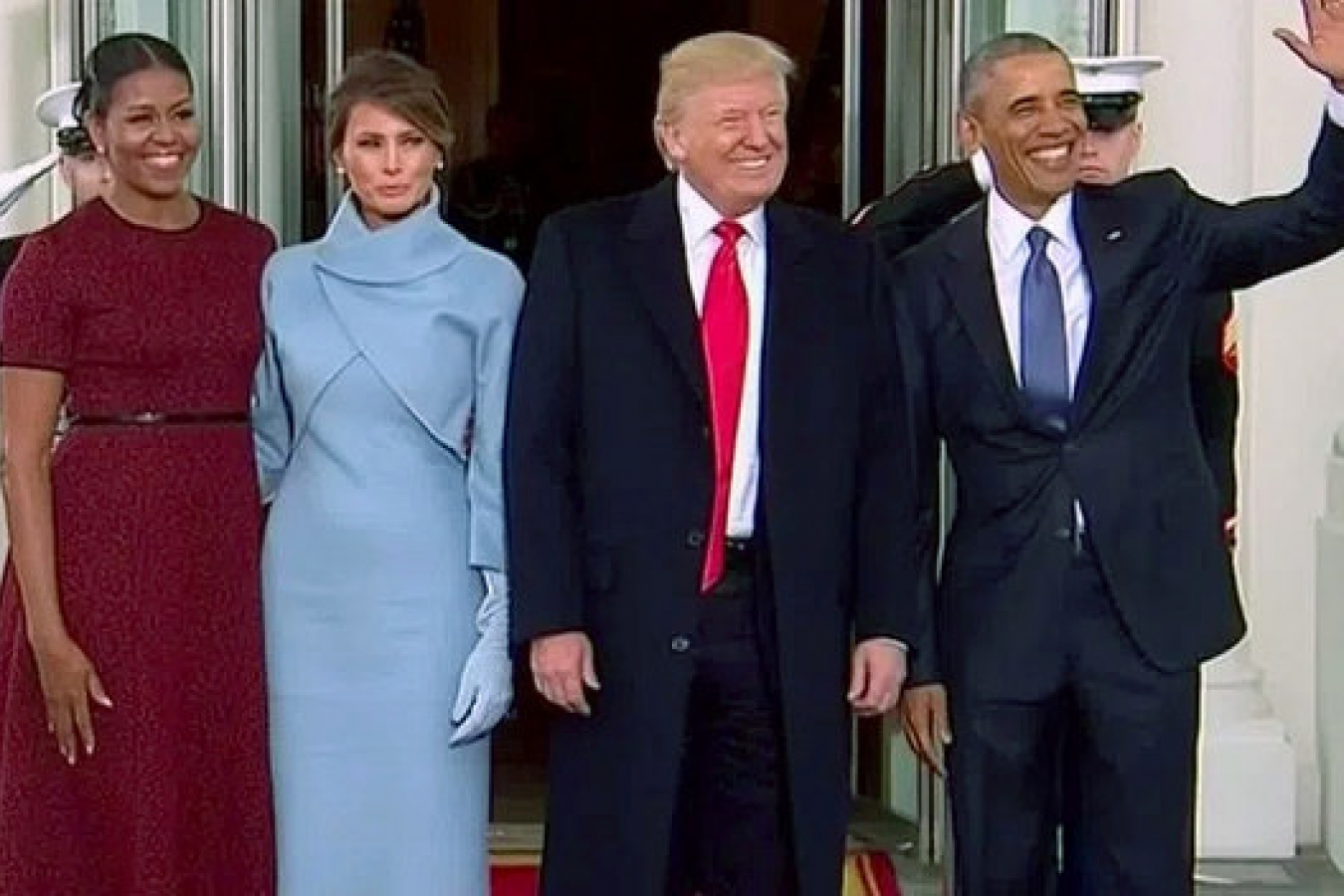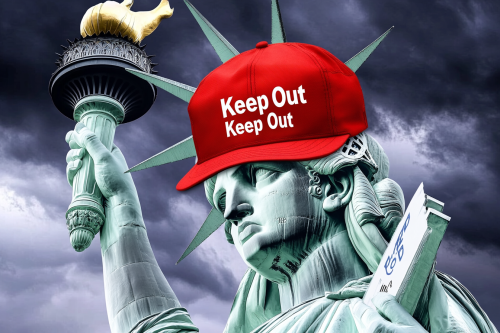Despite spending $80 billion a year on information technology, US Visa immigration data collected by the US government is a mess according to an Economic Policy Institute (EPI) report. The EPI identified severe lapses in the recording of H1B, L1 and other non-immigrant visa related data, and slammed the government’s data collection agencies for shoddy work.
Director of immigration law and policy research at the EPI – who say they are a nonpartisan think tank that seeks to broaden the public debate about strategies to achieve a prosperous and fair economy – Daniel Costa said: “It’s scandalous how poorly we’re keeping track of what’s going on with US visa programs.” In reality the organisation has a liberal left wing bias and is supported and funded by Labor Union groups.
The EPI report uncovered a number of data discrepancies as a result of inadequate records and inconsistent processes for collecting data. Shockingly, the report found that the United States Citizenship and Immigration Service (USCIS) still gathers key information on occupations and wages, on paper-based forms only.
An excerpt from the EPI report said: “Gathering crucial information by paper-based means makes this data unobtainable and impossible to review even if a Freedom of Information request is submitted and approved.”
Sanwar Ali, Editor of workpermit.com News reviews Donald Trump's period in office and US Visa Policy
The problems with the collection of US visa statistics data happened under the Obama administration. We wonder whether the Trump Administration will do any better.
Despite criticising Obama for frequent golfing trips so far Donald Trump has been spending much more of his time golfing than Obama. In August 2016 Donald Trump before he got elected said the following:
"I'm going to be working for you. I'm not going to have time to go play golf,"
Trump also made the following comment about Obama:
"I mean he's played more golf than most people on the PGA Tour, this guy,"
Based on what Donald Trump has said in the past will he and his administration have time to make all the changes that he considers necessary. Will they have time to look at the methods of collecting statistics data as well?
The EPI have also been very critical of Trump at times. Some of Trumps goals to massively increase employment according to the EPI do not make sense. Especially as Trump apparently wishes to reduce immigration.
...Trump’s jobs goals would require massive immigration or forcing elderly Americans to work at unprecedented rates..
Increasingly after the missile strike against a Syrian airfield many may be wondering what Trump really wants. Previously Trump said he wanted to have better relations with Russia. However, it has now been said that under the Trump Presidency the US has worse relations with Russia than any time since the Cold War.
Donald Trump has turned out to be very unpredictable. A so called "Isolationist" President who has ordered overseas military strikes. What will he do next we wonder. In reality will there be significant changes to the US H1B visa programs and certain other US visa programs such as the L1 visa.
24 US visa categories covered by EPI report
The EPI examined data problems relating to the number of non-immigrant workers across 24 US visa categories, including F1 visa holders working as part of the Optional Practical Training program, H1B and L1 visa holders.
Their report estimates that in the 2013 fiscal year (FY), there were 1.42 million people working in the US on a non-immigrant visas, representing approximately 1% of the overall workforce in the US. The EPI’s estimates are understood to be broken down across 10 non-immigrant work visa categories:
| Nonimmigrant visa classification or status | Number of workers |
| H-2A visa for seasonal agricultural occupations | 74,859 |
| H-2B visa for seasonal nonagricultural occupations | 94,919 |
| H-1B visa for specialty occupations | 460,749 |
| J-1 visa for Exchange Visitor Program participants | 215,866 |
| J-2 visa for spouses of J-1 exchange visitors | 8,243 |
| L-1 visa for intracompany transferees | 311,257 |
| L-2 visa for spouses of intracompany transferees | 38,952 |
| O-1/O-2 visa for persons with extraordinary ability (O-2 for their assistants) | 29,894 |
| F-1 visa for foreign students, Optional Practical Training program (OPT) and STEM OPT extensions | 139,155 |
| TN visa or status for Canadian and Mexican nationals in certain professional occupations under NAFTA | 50,000 |
| Total | 1,423,894 |
Table 14 from the EPI report shows the number of workers for each non-immigrant visa category.
The data shows that more than 460,000 of the non-immigrant work visas were H-1B visas, while more than 300,000 were L1 visas. The H-1B category is reserved for specialized, highly skilled foreign workers, while the L1 visa is granted to intra-company transferees L1A visas for managers and executives and L1B visas for specialized knowledge workers.
In 2013, in excess of 130,000 temporary foreign workers joined the US workforce on L1 visas, while a further 215,000 J-1, guest worker visas were issued in the same year. However, the EPI report did place on record that its calculations for the US non-immigrant population differed from figures held by the Department of Homeland Security (DHS) and the Pew Research Center.
The DHS estimates that 1.73 million non-immigrants were present in the US in 2014. However, the DHS failed to specify how many of these were in fact employed in the US. Meanwhile, the Pew Research Center claimed that approximately 1.7 million “temporary lawful” residents were living in the US in 2014. Yet, similar to DHS estimations, the Pew Center failed to establish how many of these were working within the US labor market.
H1B visas
Annually, H1B visas are capped at 85,000 and granted to highly skilled foreign workers. 65,000 are issued as standard, while the remaining 20,000 are reserved for those who hold a master’s degree or higher, obtained from a US university. Some employers are exempt from the cap by law, including:
- Higher education institutions/related non-profit facilities
- Non-profit research organizations
- Government research organizations
The H1B visa is popular among overseas workers because it provides a route to the coveted US green card. The EPI report found that close to 140,000 H1B non-immigrants switched their US immigration status to Lawful Permanent Resident (LPR) between 2011 and 2013.
Furthermore, the report revealed that more than 70 percent of H-1B visa petitions, approved between 2011 and 2013, were for workers aged between 24 and 35. Additionally, 80 per cent of H-1B approvals went to beneficiaries from countries in Asia, particularly India, with the country receiving a whopping 70 percent of the overall number of H-1B visas issued.
L1 visas for intra-company transferees
Two types of L1 visa exist. There’s the L1A visa, which is reserved for employees who are employed as managers or executives, while the L1B visa is issued to overseas workers who have ‘specialized knowledge’. For fiscal years 2009-2012, 57.6 percent of petitions filed were for L1A visas, while 42.4 percent were for L1B visas.
The EPI report identified a massive discrepancy between DHS held data and the numbers gathered by USCIS in relation to the number of L1 petitions approved between 2009 and 2012.
An excerpt from the EPI report reads: “During the 2009-2012 period, DHS issued 272,573 L1 visas, but USCIS data on approved L1 petitions show only 142,425 approved L1 visa petitions.”
In contrast, the report itself estimates that over 430,000 L1 workers had been recruited to work in the US in 2013. “Like the H-1B population, most L1 workers hail from Asia (mostly India), but a significant share are also from Europe,” said the report.
According to the report, data pertaining to the age and gender of L1 beneficiaries was unavailable. Additionally, the report calculated that between 2007 and 2013, over 58,000 L1 visa holders switched to Lawful Permanent Residence LPR (Green Card) status.
In recent weeks, US lawmakers have put forward a number of bills with a view to restricting non-immigrant work visas, particularly the H-1B and L1 visa routes. However, with US immigration data in such a mess it’s clear that keeping track of numbers is proving difficult.
Workpermit.com can help with E1, E2, L1, H1B, B1 in lieu of H1B, E3 Visas and other types of US Visas
For more information, or to find out if you are eligible for an US work visa, contact WorkPermit.com on 0344 991 9222.




